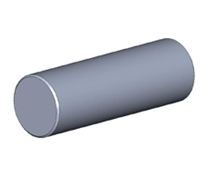MAMMAL TRACKS AND SCAT: Life-Size Pocket Guide
CLICK picture to order

A waterproof, 44 page pocket-size book, with life-size illustrations.
(Yes, even the bear!)
It’s a guide that’s great for tracking through all seasons.
You can store it in your pocket so it’s available whenever you need it.
This guide can be used in any weather.
It’s rugged and made to last.
It is spiral bound, allowing it to be laid down on the ground for simple comparison with the actual track or scat.
The illustrations in this guide are the Real Size, making it much easier to compare them with tracks and scat in the field.
For example, look how simple it is to tell a moose track from a deer track.

Moose (speckled)
Deer (solid)
And see how simple it is to tell moose scat from deer scat.


Mammal Tracks
To identify tracks, the Pocket Guide uses a Track Key and a Pattern Key.
Track Key
First, you determine whether the front feet and the hind feet are about the same size or not the same size.
For example:

When the front feet and the hind feet are about the same size, look at, for example, the number of toes.

When the front feet and the hind feet are not the same size, look at characteristics such as whether they look like:

Pattern Key
First, you determine the Track Pattern (waddling, bounding, hopping, or walking/trotting).
For example, here is the bounding pattern for a weasel:

Next, use the ruler on the back cover to measure the straddle (the width of the pattern).
Mammal Scat
To identify the species, first you determine if the scat is a:

OR
Sphere

Cylinder
For a sphere, determine if it is:
OR

OR

Round
Elongated
Elongated- Large
For a cylinder, determine if it is:

Pointy
OR

Broken
OR

Twisted
OR

Blunt
*Always take extreme caution when examining scat.
*Never touch scat with bare hands.

